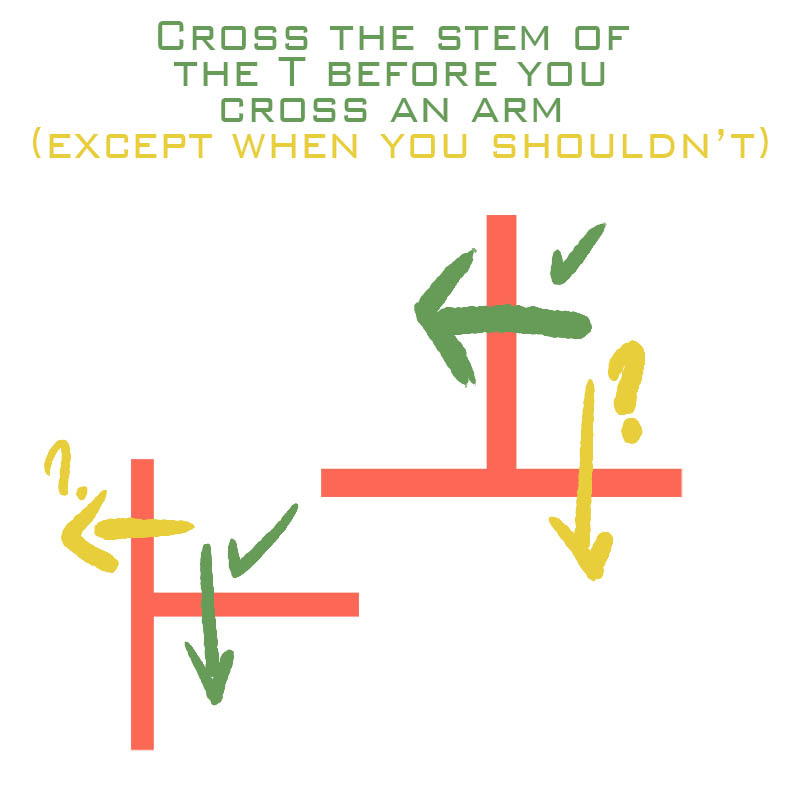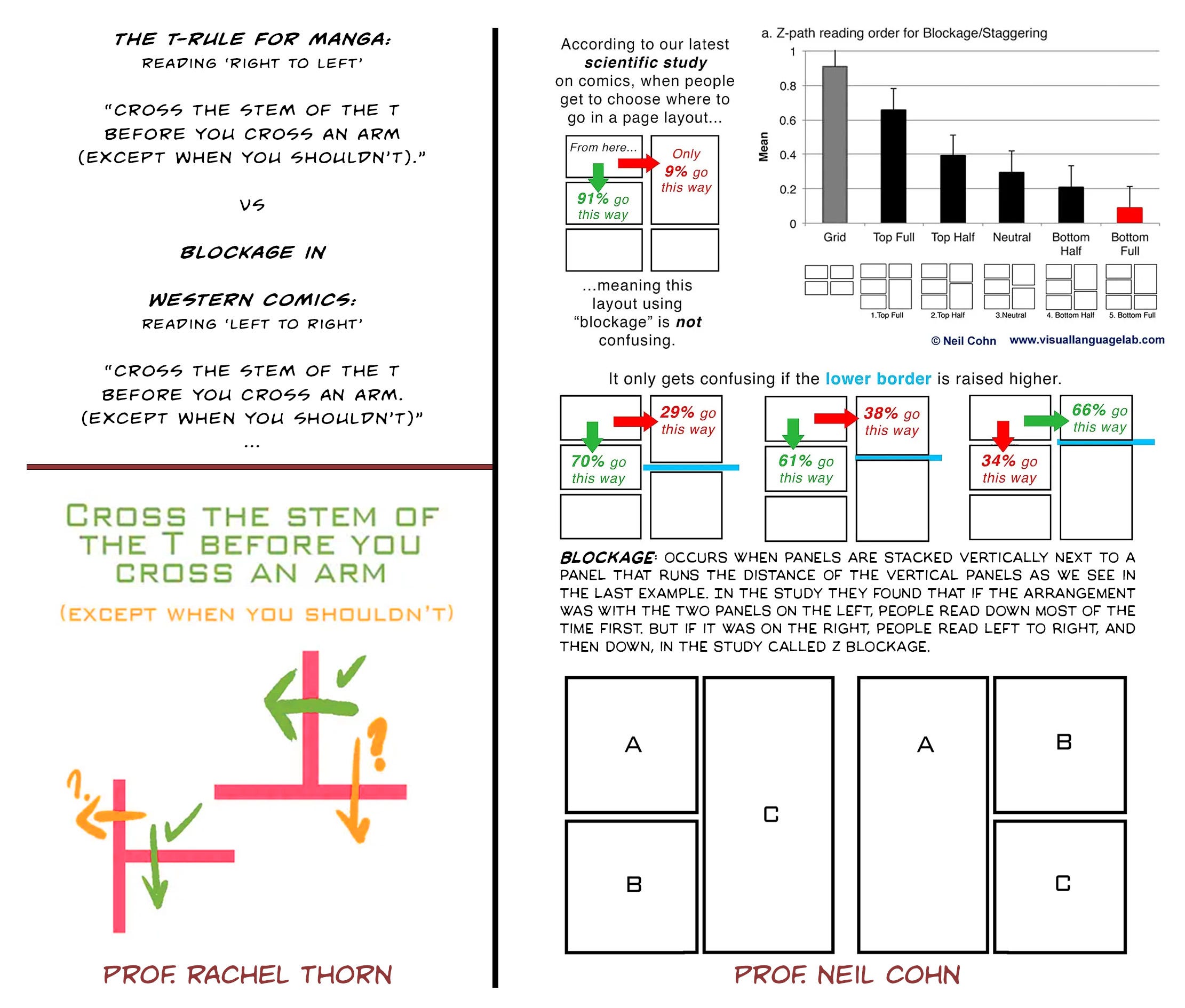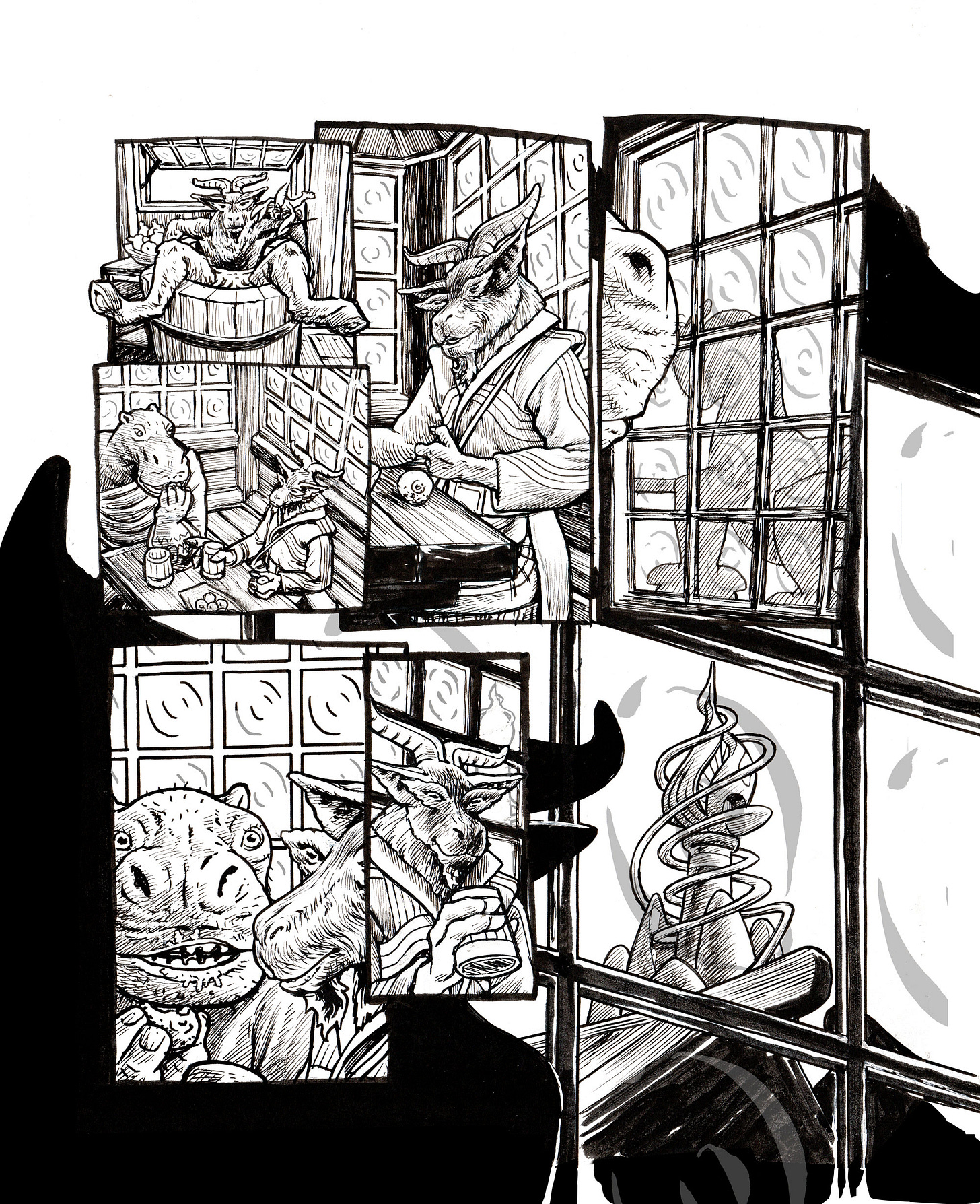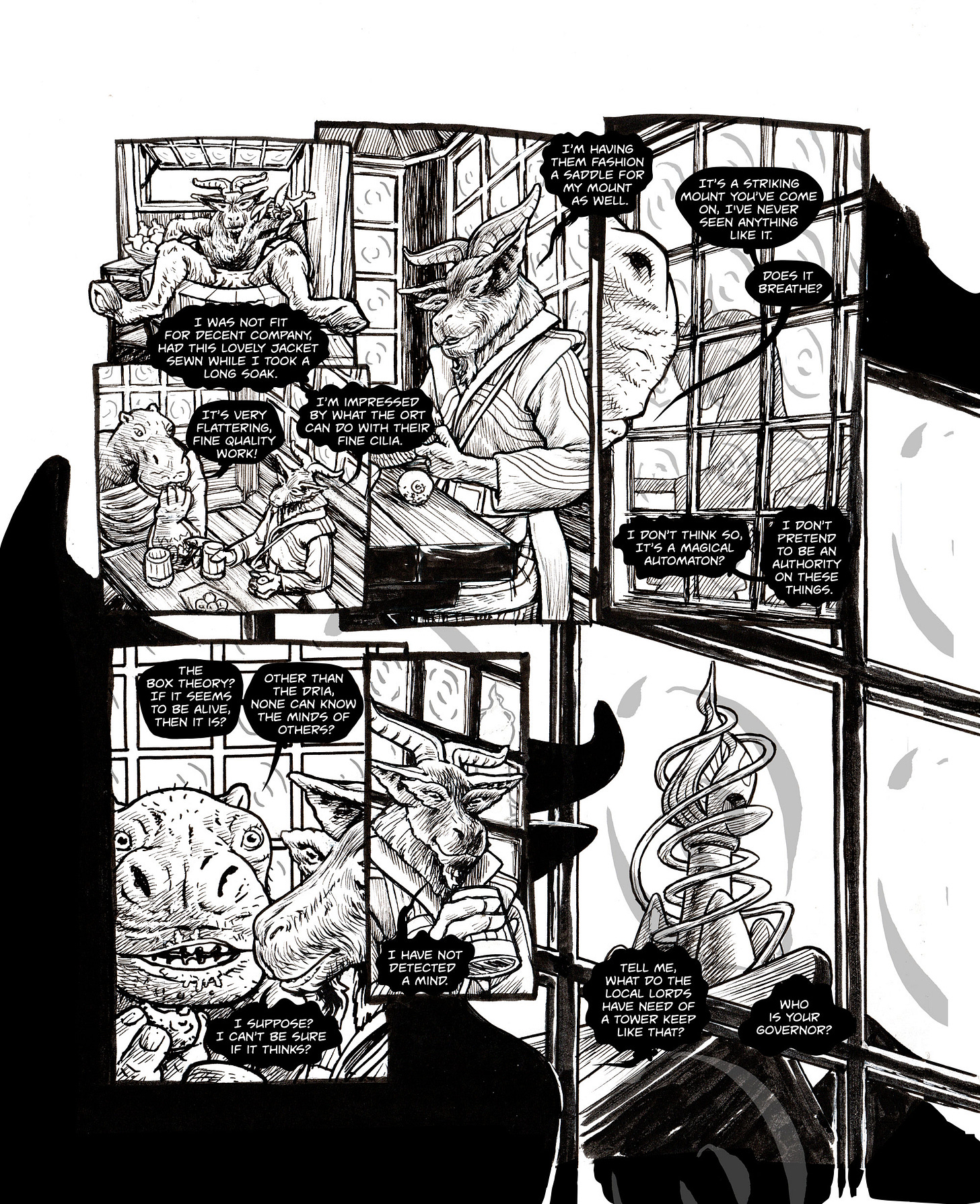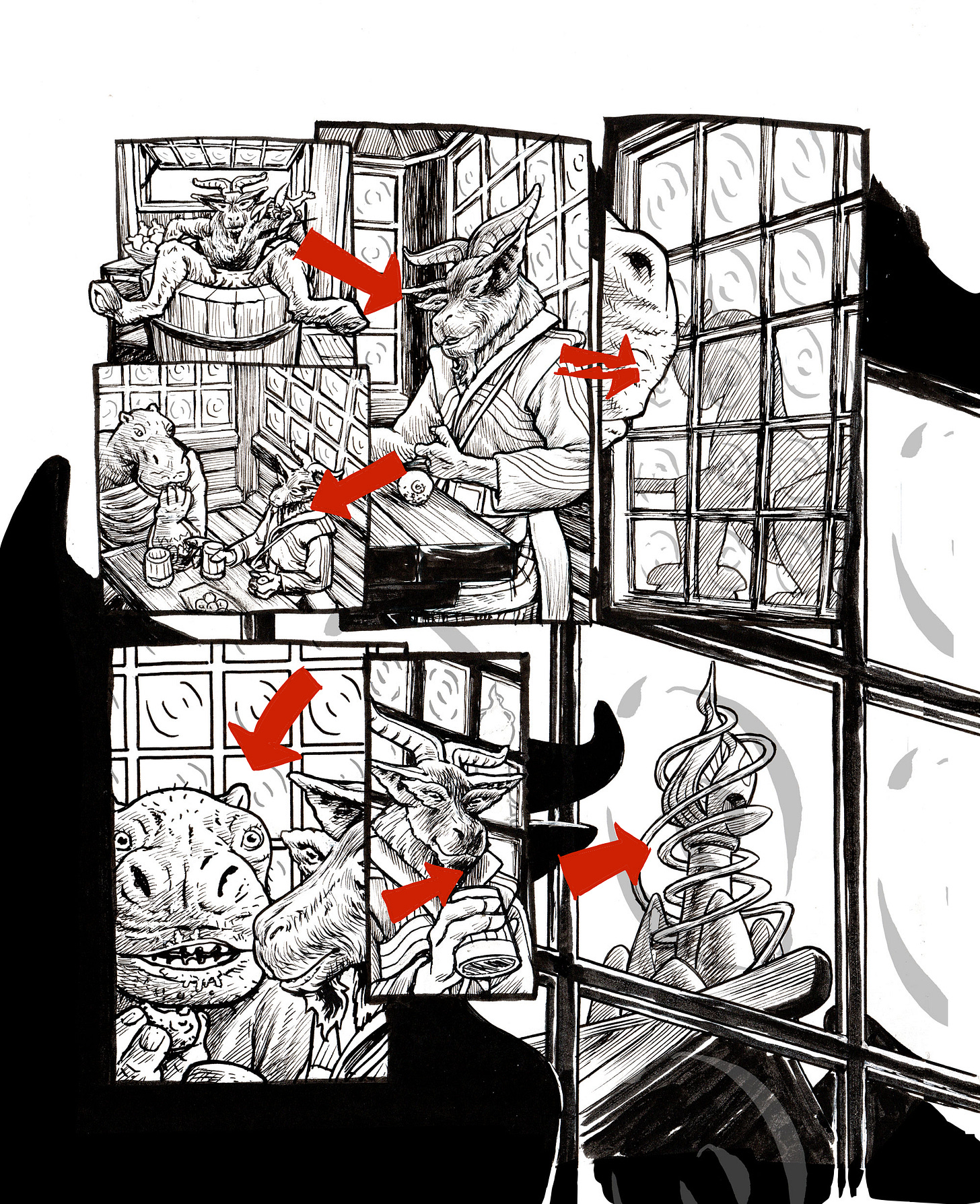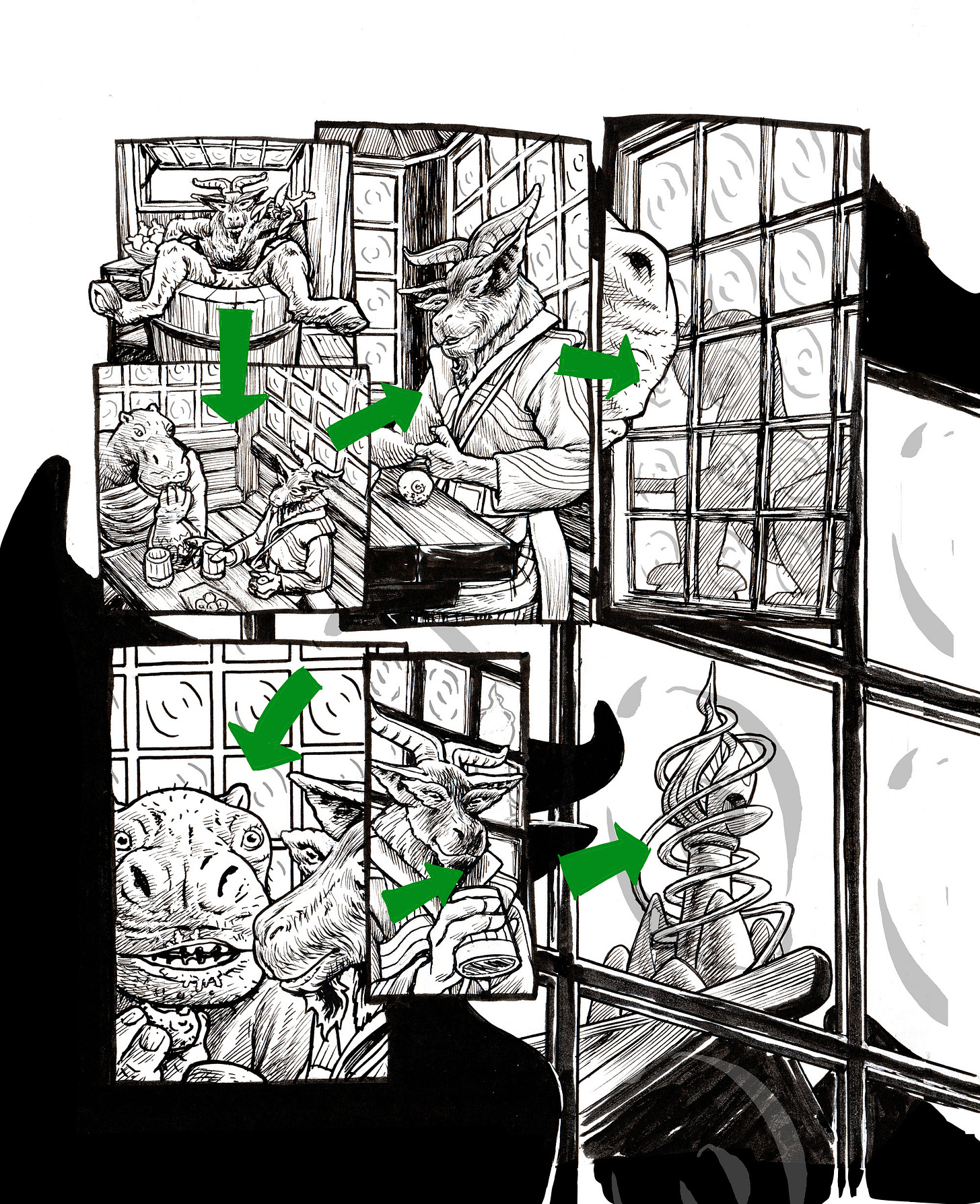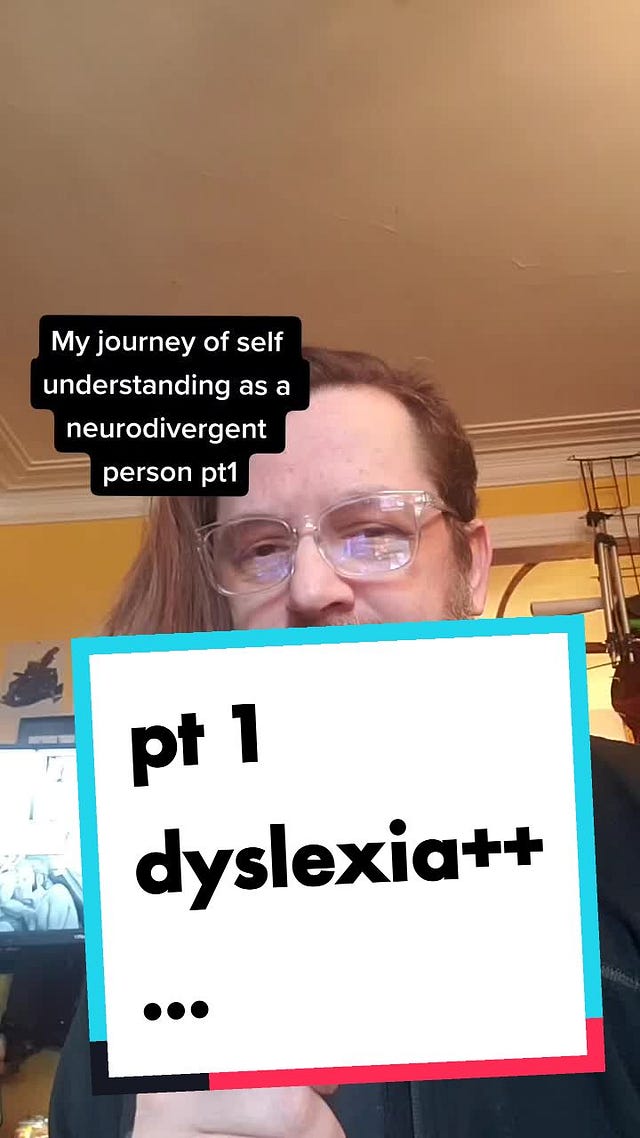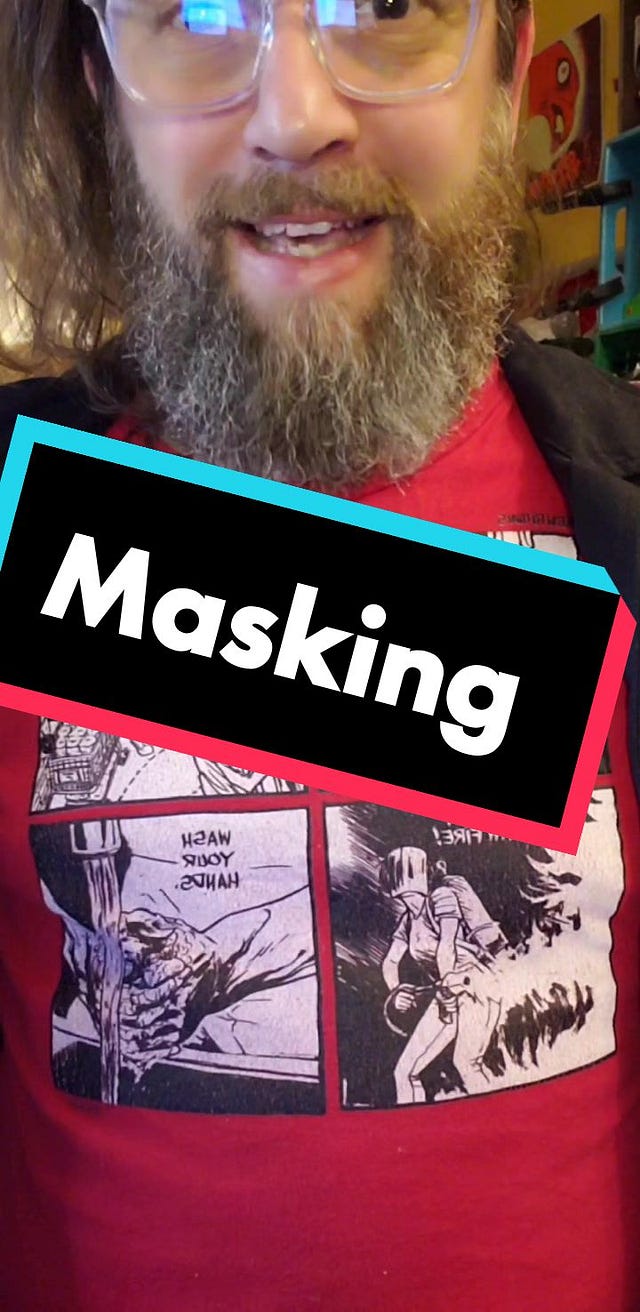It’s time for another process pod.
I’ve got two things I want to bring up this weekend.
First, comics specific, I wanted to talk about “the T rule” vs “Blockage”.
Don’t get ideas. Those are two theories about reading comics pages from professors who have studied the mechanics of it, in two different cultural genres of comics.
Blockage was the first I learned about, it helped back up something I felt intuitively but Professor Neil Chon and some others did the work in 2013 and found out a few interesting things about how people read comics.
I was teaching comics and when I read about this, I incorporated that into my own Making Comics classes. It's the focus of a big chunk of this article on the subject of page design I created as a text for my courses.
They determined this by giving people comics page layouts with no art or text, just blank boxes, and asked people to number them in the order they would expect to read them if they did have a comic in them.
They also asked if they read comics before or didn’t, as a control for how ‘literate’ they were of the medium in the first place.
The results showed a bunch of things and one pattern is named Blockage and Z-Blockage.
It found that when panels are stacked vertically next to a taller panel that runs the same the distance of the vertical panels or more, people’s reading order was consistent based on which side of the taller the panel the two were, and if the height of the taller one was less than the two, it changed the pattern as well.
When the two were on the left, and the right was the full height of both, readers most often scanned down the two first, before looking to the taller one on the right.
The pattern flipped when the order did, so then you have a whole vertical pannel that’s read first, then the two others. Right and then down.
Now it’s interesting because this panel layout pattern is used a lot but it’s been controversial in the past. In my article I give the example of a specific suggestion to avoid it as confusing for readers by Jessica Abel in her book with Matt Madden. A great book by the way.
But IMO the example they give I think is more suggestive of the role word balloons can play, and detailed that in my article on the topic so check that out for more on that.
I’ve also learned about a variation I think on the same principle for Manga, but it’s inverted essentially. It’s been named The T Rule by Professor Rachel Thorn.
Of course you read manga right to left and from the other end of the binding of the book. The T in the name, comes from and describes the shape of gutters between panels which gives you on gridded page layouts either Ts or + shapes at the intersections.
Also in Manga Rachel wrote that the use of + gutter configurations has become rare in Manga too. In that context, they have come to follow a not quite universal but nearly, pattern, of…
“Cross the stem of the T before you cross an arm (except when you shouldn’t).”.
It strikes me that that’s really the same as Blockage, just the reading direction is flipped!
Unfortunately the twitter thread and account I first read her posts about this on are gone, but I covered it in in a bit more detail over on Flow and the Eyelines as well. You can find her site here, and Wikipedia here. Haven’t had time to dig up new sources for her thoughts on The T Rule yet, only just noticed her twitter account is gone.
When you flip the page, and read left to right, the pattern of a T on it’s side again tells you to cross the stem and go down, before you cross the arm!
Which is cool because that suggests it’s an ever more fundamental human visual reading pattern, in terms of inclination based on starting points and proportions.
Regardless of L to R or R to L, when the standard position for the next panel is twice the depth/Hight or more of those it’s next to, the inclination is to go down instead.
This all comes to mind because a friend and former student asked on Instagram if I was worried that the first three panels of this page would be read out of order. he saw it before the lettering was in place so this…
Here’s the page with it’s text in place now.
He thought maybe this would happen,
…that maybe it was made more likely by The Soldier's hoof specifically poking into the taller panel the way it does?
Fair question, that kind of thing can lead the eye. I was fairly sure that between Blockage and my lettering placement, that wouldn’t be the case. That you would read it this way naturally instead. What do you think? it should read like this, what was your instinct looking at it up top with the text?
I’m curious, does anyone have an issue with the reading of that page? The word balloons don’t have the most visible tails I know, I might come back to that but I feel like they work for now..
I heard about the new Substack Chat this week but it’s IOS only so my PC and Android ass is out of luck. Any of you using it? Share your thoughts in the comments here, leave a voice message over on Anchor if you rather, or just reply by email! ;)
ASD/ADHD Journal
So I’ve been doing a lot of thinking, reading and watching about this over the last few years - that built on it being a question since I was a kid to some extent for me - and recently been writing to myself distilling what I’ve come to understand in the wake of some big changes in how both are described now.
In 2019 some of the first formally developed self assessment tools have come online for Autism, and after learning about them over the winter I’ve done the RAADS–R and CAT-Q tests. The results certainly seem to back up my growing impressions, though I have issues with the way they are structured and the questions are phrased.
Knowing something about how psychology works I took the RAADS-R test in two modes. In light of the CAT-Q results, the variation I got with the other seems to fit.
Problem IMO: The tests frame things hyperbolically. Like “I get extremely upset when the way I like to do things is suddenly changed.”
And then the replies are pre written multiple choice, that read
“True now and when I was young”
“True only now”
“True only when I was younger than 16”
“Never true”
With no way to score along a variables of intensity. Or other specific variables for context? Why 16? I figured out some of that stuff early, some a lot latter…Hrrrmmm.
So first I took it more conservatively, I have systems at this point in my life that I use, some with ease even! But then depending on the context and other stressors, and what kind of routine we’re talking about, I can still have some discomfort.
So for those my conservative impulse was to Answer ‘True only when I was younger than 16’. When I did that in general for the test I got score of 126.
When I took it again but allowed for the fact that I get bothered and can be more upset even if overall I’m not extremely anything, thanks to systems? That comes out with a 136.
That’s where my CAT-Q is interesting. It’s high. 125 over all. With a lot of effort made in adaption. So yeah.
So what does that mean? Well here’s the meaning of the score ranges.
And how to read the CAT-Q numbers.
And my scores in full
So, looking like a pretty strong indication eh?
I’ve learned to mask very well.
When I first read about masking, I was pretty sure that was a thing I was doing. I even knew it by that name, just didn’t think about the reasons. I guess I thought it was what everyone did to some extent. Which is partly true but it’s a whole order of reasons and degrees for those of use on the spectrum.
Without knowing he was doing it my father taught me openly how to do this when I was very young too, so I got an early start. A good thing because I was going to need it.
This was for him, a thing he bragged about In the context of explaining how he code switched between how he presented as a biker and pot dealing radical, a political organizer, a bureaucracy at the city haul titles and deeds office where he worked under an assumed name, rubbing shoulders with business types or rich folks, or defending himself in court with the assistance of some lawyer friends.
I would have been around 6 I think? Maybe a bit younger, hard to be sure.
He explained how he kept personas - described at times as Masks - on an imagined Lazy Susan with each just in reach to be pulled around into place for use in a given context. These were codes, sets of rules for how to talk and what to say when and where. Sometimes full personas too, names and everything. Used to woo, seduce, convince, entertain, persuade, annoy, whatever.
He was a pirate, but he also was probably a bit Neuro spicy himself. My aunt at least - his little sister and a doctor herself - thinks that's very likely. And I have documents in his files that show how much trouble he had in school due in part to it.
However he was using those tools to navigate the world or why, his explanation to me gave me a framework for understanding. I knew to watch for social cues and learn to read them, and learn what to do and which social niceties to apply in a given context.
It took me a while, I was not gifted in that dept. I was quite socially clumsy in my teens and twenties I think? least be my internal metrics. But then I've also constantly worked on it, never stopping. On average I have the impression I’ve put more time into that than most people do, the end result being I got better and better at passing.
I’ve been making some tiktok clips about all this recently too, giving back a bit there to the community that’s helped me learn some newer things, half to just think out loud too, layout what I've been learning about myself and the recontextualization of knowing myself the last decade or so. Check them out here. I’ll embed the first one here, links to the first 4 of them are in the comments of the previous starting here…
And then just added a new one this week about masking.
Ok, this is all for this one!
As always you can leave a voice message over on Anchor, something in the comments here, or wherever on social media! If you’re on TicTik say hi or stitch one of my things or something!
Cheers
max






